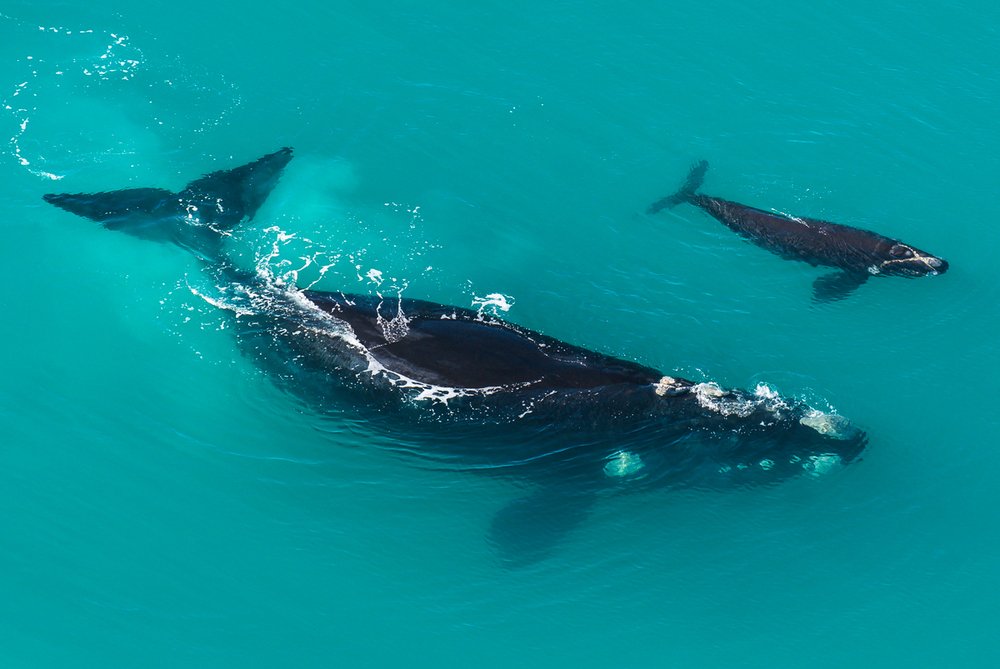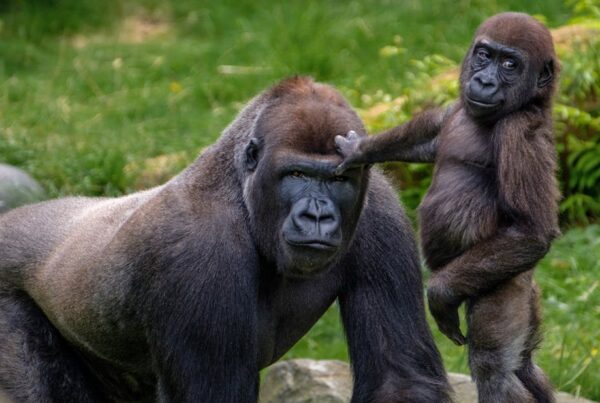5 Fascinating Facts About the Southern Right Whale
Facts About Southern Right Whale
Giants of the Deep: A Magnificent Encounter
Gliding with grace through the icy waters of the Southern Hemisphere, the Southern Right Whale is a marine marvel whose presence stirs awe in every heart lucky enough to witness it. These whales, scientifically known as Eubalaena australis, are among the most majestic and mysterious creatures of the ocean. Their immense size, gentle behavior, and ancient migratory traditions make them not only a wonder to behold but also a crucial species in understanding marine ecosystems. Their name harks back to the dark whaling era when they were deemed the “right” whales to hunt due to their slow speeds and high blubber content, yet today they are symbols of marine conservation and rebirth.
Every winter and spring, the coastal waters of South Africa become a theater of oceanic ballet as these leviathans breach, lobtail, and nurture their young close to shorelines. The Southern Right Whale, once on the brink of extinction, has seen a resurgence in population due to conservation efforts. And as we delve into the intricate life of this colossal yet gentle marine mammal, we uncover five captivating truths that define its essence, behavior, and significance in the natural world.
Majestic Size and Adaptation (Facts About Southern Right Whale)
The Southern Right Whale is nothing short of a giant. Adult whales often exceed 15 meters in length and can weigh up to 60 tons, making them one of the largest species of baleen whales. Their broad backs, rotund bodies, and absence of dorsal fins give them a uniquely smooth and rounded silhouette, perfectly adapted for energy-efficient movement through cold waters. Their thick layers of blubber are not only key to insulation in frigid oceans but also serve as energy reserves during their long migrations and fasting periods.
Their enormous heads, which can make up a quarter of their body length, are adorned with distinctive white callosities—rough patches of skin that provide a natural fingerprint for identification. These callosities are host to colonies of small crustaceans known as cyamids or whale lice, which feed on the dead skin and do not harm the whale. The arrangement of these callosities is unique to each individual and has become a valuable tool for researchers monitoring populations.
The Southern Right Whale’s adaptation to its marine environment is a story of evolutionary refinement. Unlike toothed whales, these giants are filter feeders, relying on their long baleen plates to sieve vast amounts of zooplankton, especially copepods and krill, from seawater. With mouths gaping open, they glide through dense patches of prey, trapping food in the fibrous baleen fringes. This feeding strategy not only supports their massive size but also underscores their importance in marine food webs.
Acrobatic Displays and Surface Behavior
Despite their size, Southern Right Whales are known for their energetic and acrobatic displays at the ocean surface. Breaching, where the whale propels itself out of the water and crashes back down in a thunderous splash, is not only a spectacle for observers but a vital form of communication and possibly a way to dislodge parasites. Their lobtailing, in which they slap the surface with their massive tail flukes, and spyhopping, where they rise vertically to peer above the water, further demonstrate their behavioral complexity.
These surface behaviors are most frequently observed during the breeding season, particularly in the sheltered bays along South Africa’s coast. Here, pregnant females give birth and nurse their calves, and males display strength and stamina in attempts to secure mates. The sounds produced by these whales—low-frequency moans, pulses, and groans—travel long distances underwater, forming part of a sophisticated acoustic communication network. These vocalizations play an essential role in social interactions and mating.
For wildlife enthusiasts, witnessing such powerful behaviors so close to shore is nothing short of mesmerizing. In places like Hermanus and the Western Cape, it is not uncommon to see these behaviors from land, an experience that links human curiosity with one of the most profound wildlife encounters on the planet.
Long Migrations and Strong Site Fidelity
Southern Right Whales are renowned for their extensive migratory patterns. They travel thousands of kilometers between their summer feeding grounds in the Southern Ocean and their winter breeding grounds in warmer coastal waters. This migration, driven by seasonal availability of food and the need for safe calving environments, reflects the whales’ extraordinary navigational abilities and deep biological rhythms.
What is particularly fascinating is their strong site fidelity. Female whales often return to the very bays where they were born to give birth to their own calves, a cycle that spans generations. This cultural tradition is passed from mother to calf, establishing deeply rooted migratory pathways that connect the icy Antarctic waters to the sun-drenched coasts of southern Africa, South America, and Australia.
Understanding these migration routes is vital for conservation, as it informs the creation of marine protected areas and guides policies on shipping lanes and noise pollution. The whales’ reliance on specific regions for breeding also makes them vulnerable to changes in climate and oceanic conditions, reinforcing the importance of international cooperation in marine stewardship.
Maternal Care and Reproductive Behavior
One of the most touching aspects of the Southern Right Whale’s life is its maternal devotion. Calves are born after a gestation period of about 12 months and can weigh over a ton at birth. They are nursed for nearly a year, relying entirely on the rich, fatty milk of their mothers. During this time, the bond between mother and calf is profoundly strong. Mothers are fiercely protective and remain in shallow waters to minimize predation risk and conserve energy.
These whales do not reproduce annually. Females typically calve every three years, allowing time for recovery and nurturing of the young. This slow reproductive cycle makes population recovery a long-term process, especially given the historical depletion from commercial whaling. However, the whales’ fidelity to safe calving areas and their resilience in the face of past exploitation have fueled optimism among conservationists.
Behaviorally, mating is highly competitive. Males do not form harems but rather compete through sperm competition, as multiple males may mate with a single female in a season. This unique strategy emphasizes the evolutionary adaptations of reproductive anatomy and energy investment seen in this species.
Conservation Success and Ongoing Challenges
The story of the Southern Right Whale is a powerful tale of recovery. Hunted nearly to extinction in the 18th and 19th centuries, their numbers have gradually increased due to international protection and the banning of commercial whaling. Today, populations are slowly rebounding, with South Africa hosting one of the most significant seasonal congregations globally.
However, their journey is not without challenges. Entanglement in fishing gear, ship strikes, climate change, and pollution remain persistent threats. Conservation efforts now focus not only on protection but also on monitoring health, population genetics, and the impact of human activities. Responsible ecotourism, community engagement, and scientific research form the pillars of modern conservation strategies for this species.
Marine sanctuaries and coastal observation points have become crucial in both studying and protecting the whales. South Africa, particularly through locations like De Hoop Nature Reserve and Walker Bay, serves as a beacon of hope where human admiration meets wildlife conservation. The presence of these whales enhances marine biodiversity and supports local economies through whale-watching tourism, emphasizing the interconnectedness of ecological health and sustainable livelihoods.
Discover the Ocean Giants with WildHorn Africa
There are few experiences on Earth as humbling and heart-stirring as witnessing a Southern Right Whale breach against the backdrop of a rugged African coastline. These moments encapsulate the wild spirit of the ocean and offer an intimate glimpse into a world few truly understand. For travelers seeking an unforgettable marine adventure, look no further than WildHorn Africa.
WildHorn Africa offers tailored marine and land-based safari experiences that bring you face-to-face with the wonders of the natural world. Their expert guides, ethical practices, and deep knowledge of African wildlife ensure that your journey is both thrilling and responsible. By booking your African tour with WildHorn Africa, you not only embrace the thrill of adventure but also support the preservation of extraordinary species like the Southern Right Whale.
Take the plunge into an ocean of discovery and let WildHorn Africa be your gateway to the majestic and mysterious marine giants of the Southern Hemisphere.
Facts About Southern Right Whale #Facts About Southern Right Whale Facts About Southern Right Whale




 WildHorn Africa – Authentic and unforgettable tours across Africa, guided by local experts who know the land, wildlife, and culture best.
WildHorn Africa – Authentic and unforgettable tours across Africa, guided by local experts who know the land, wildlife, and culture best.


